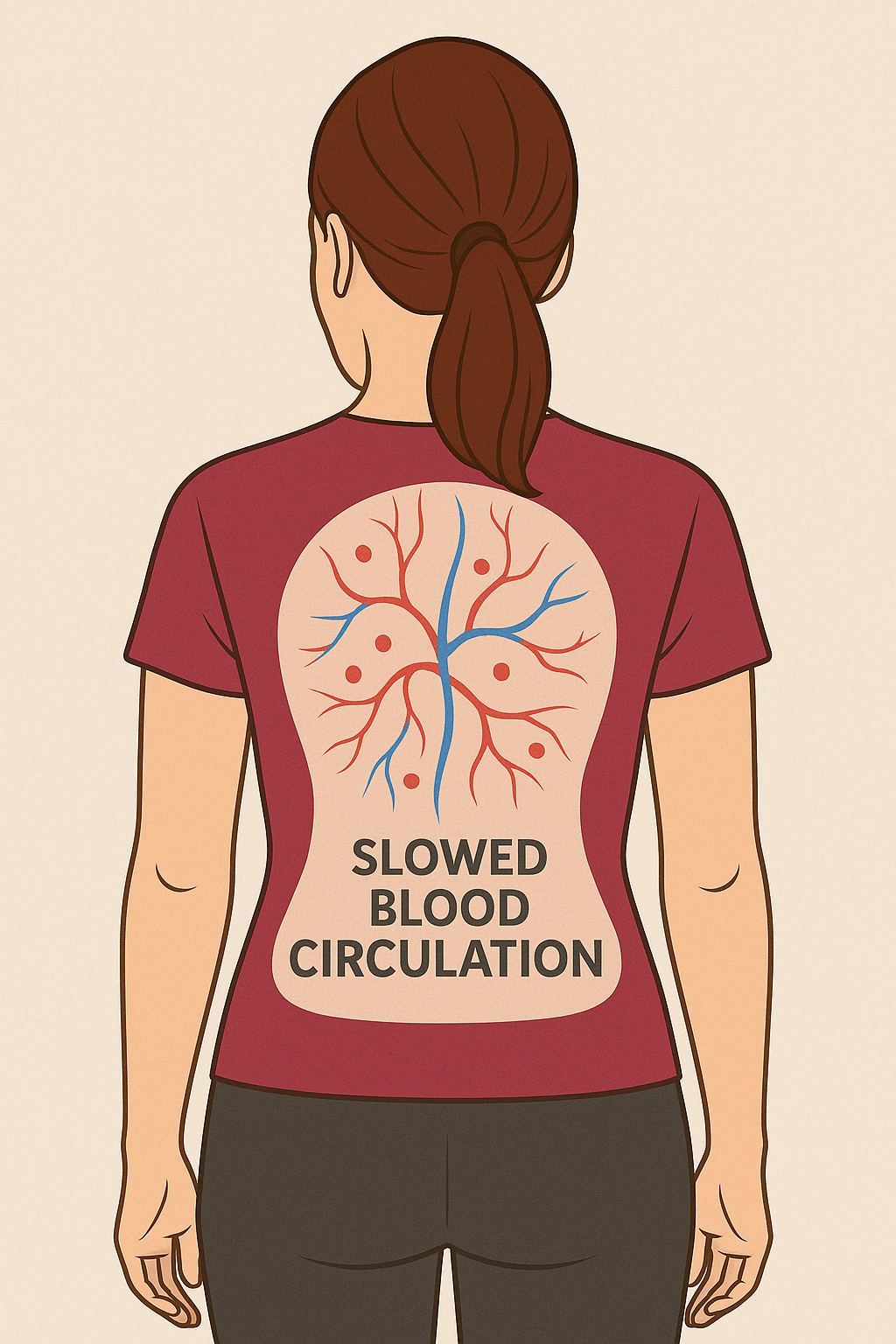How to Diagnose Your Back Pain in Perimenopause in 5 Minutes
👋 Hello peri friend!
Let’s talk about something that might surprise you.
If you’re in your 40s or beyond, you’ve probably felt it already:
That quiet voice saying, “I just can’t push the way I used to.”
And maybe you’ve tried—tried to go back to the workouts that once energized you, tried to hold it all together, tried to keep up the same pace.
But your body? She’s not having it.
And you’re not wrong for feeling confused. You’re not imagining this shift.
In fact, you might still be doing everything “right”—but instead of helping, it’s making things worse.
One of the earliest signs of perimenopause’s deep body shift?
💥 Back pain.
Why Back Pain in Perimenopause Feels Different
Here’s the truth no one told us: perimenopause isn’t just a dip in estrogen.
It’s a full-body energetic transition that affects your:
Nervous system
Fascia
Joints
Pelvic floor
That’s why yoga, workouts, or even massage that used to help now don’t touch the pain.
And why so many women in perimenopause feel frustrated when doctors dismiss it as “just aging” or offer generic advice.
👉 The reality? There are five distinct types of back pain in perimenopause, and knowing which one you have is the key to lasting relief.
The 5 Types of Back Pain in Perimenopause (and How to Tell Which One You Have)
1. The Stagnant Body
Feels like: dull, heavy, achy stiffness, worse after sitting or sleeping
Clues: your whole body feels puffy, circulation feels sluggish, fatigue lingers for weeks, too much sitting, not enough movement, exercise, weak muscles.
Root cause: slowed circulation + fascia dehydration
What helps: breath-led movement, gentle twists, hip circles, and mobility snacks
Stagnant Body Back Pain
👉 Think gradual bite moves before flexibility , stretching.
2. The Tense + Overtrained Body
Feels like: pain worse after activity or even stretching, body feels clenched
Clues: wired but tired, broken sleep, history of high-intensity workouts
Root cause: nervous system overdrive locking fascia + muscles in guard mode, because of overtraining, incorrect training, or not enough rest in between. Muscles are overloaded and nervous system ‘‘senses danger.’’
What helps: fascia release with heat + breath, downshifting (exhales, humming, legs-up-wall), gentle core reintegration
👉 Think soothe before you strengthen.
Tense and Overtrained Back Pain
3. Pelvic Misalignment / SI Joint Dysfunction (Very Common in Perimenopause)
Feels like: sharp, stabbing, one-sided pain; worse when walking, rolling in bed, or lifting
Clues: one hip feels “off,” you’ve been told it’s sciatica/hip/low back pain but nothing worked
Root cause: SI joint instability from hormonal ligament laxity + pelvic imbalance due to repetitive one sided load (for years carrying children, heavy bags)
What helps: 90-90 breathing, supported bridges, sequencing-based deep core resets, dog birds, slow and control movements that activate your core without loading your si-joint.
👉 Think wall marches, slow and careful aligned drills that make your nervous system trust the moves you make instead of throwing you off with pain.
Si-Joint Back Pain
4. 🔥 Sciatica-like Pain (Common in Perimenopause)
Feels like: Shooting or burning down butt, thigh, or leg (sometimes into the foot)
Triggers: Sitting too long, standing unevenly, pelvic misalignment, tight fascia or piriformis
Root cause: Pelvic instability, SI joint dysfunction, or fascial restriction irritating the nerve
Clues: Often comes and goes, flares with posture changes, not always tied to a disc problem. Pain maybe worse with lots of back and forward bending.
What helps:
✅ Glute and piriformis release
✅ Pelvic resets (90-90, supported bridges)
✅ Gentle core–pelvis integration
✅ Releasing compression instead of “stretching the sciatic nerve”
👉 This is why so many women are told “it’s sciatica,” but meds, stretches, or standard PT don’t work.
Sciatica-like Back Pain in Perimenopause
⚡ True Sciatica (Disc-Related Nerve Compression)
Feels like: Sharp, electric, or shooting pain radiating from low back down the entire leg into the foot
Triggers: Coughing, sneezing, lifting, bending forward — anything that increases spinal pressure
Root cause: Herniated or bulging disc pressing directly on the sciatic nerve root
Clues: May include numbness, tingling, or weakness in the foot/leg; MRI often shows disc pathology. The pain is worse when you bend forward, because it compresses the disc.
What helps (under medical guidance):
✅ Reducing inflammation + spinal load
✅ Specific PT for disc decompression
✅ Sometimes medical or surgical intervention
True Sciatica Back Pain
✨ Key Difference
Sciatica-like pain in perimenopause = nerve irritation from pelvis + fascia dysfunction (no true disc compression).
True sciatica = direct disc pressure on the sciatic nerve (structural spine issue).
5. Facet Joint Compression
Feels like: sharp pain with backbends or twisting, more in low spine than pelvis but is felt more on one side
Clues: worse after “core strengthening,” back bends make it worse, as well as torso twists
Root cause: compressed joints between vertebrae, often from hormone-driven ligament laxity + posture shifts
What helps: deep core reactivation with breath, postural unwinding, avoiding excessive backbends, twists.
👉 Think decompress before you load.
Facet Joint Inflammation Back Pain
My Story: Why I Had to Figure This Out
I’m Ira, founder of PeriPowerful—and I’ve been there.
For years, I battled SI joint dysfunction, nerve zaps, pelvic instability, and “mystery pain” that doctors couldn’t explain. I couldn’t even roll over in bed without wincing—let alone dance salsa, which was my lifeline.
When I realized stretching and guessing weren’t working, I became my own recovery team.
Through years of research and trial, I discovered this: not all back pain is the same. And in perimenopause, misdiagnosis is common. Treating the wrong pain pattern can keep you in the limbo for years.
How to Diagnose Your Perimenopause Back Pain in 5 Minutes
Check the pain quality – dull, sharp, stabbing, burning, stiff?
Notice the trigger – worse after sitting, standing, walking, activity, or rest?
Identify the location – pelvis, low spine, one side, both sides?
Track patterns – constant, cyclic, or flare-ups around your period?
Cross-reference with the 5 types above
💡 Once you know which type you have, you can start addressing the real root cause instead of chasing symptoms.
Next Step: Personalized Relief
✨ If you’re nodding your head—or still unsure which type you are—you don’t have to figure this out alone.
That’s exactly what I do in my 1:1 PeriPower coaching program:
We identify your back pain type
Create a customized plan for relief
Restore your body so you can move, sleep, and live without constant flare-ups, but also work with your Mind and Spirit to lock your progress for future so you live aligned not only in perimenopause but also beyond.






